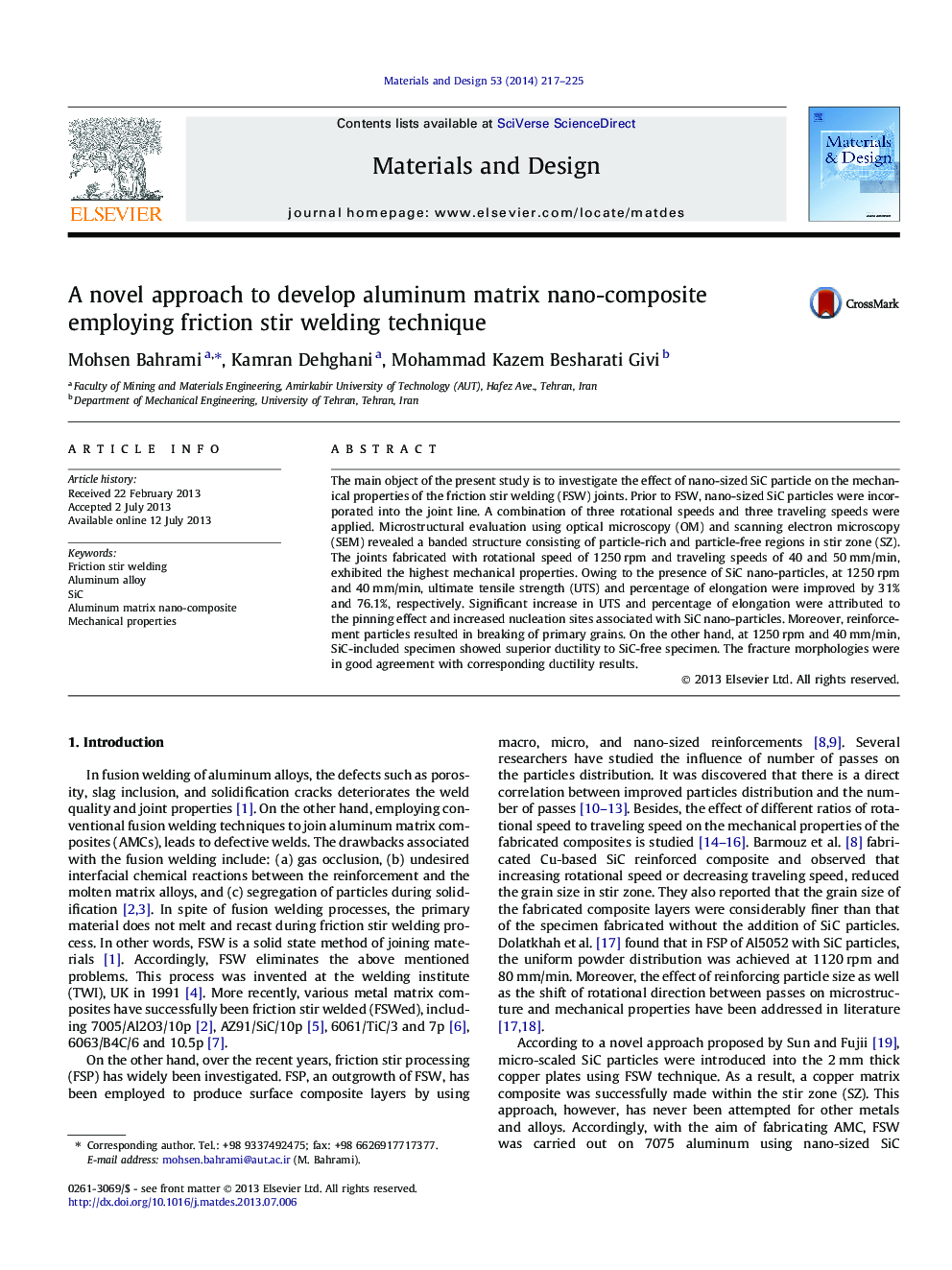| Article ID | Journal | Published Year | Pages | File Type |
|---|---|---|---|---|
| 829732 | Materials & Design (1980-2015) | 2014 | 9 Pages |
•AA7075/SiC nano-composite developed employing friction stir welding technique.•1250 rpm and 40 mm/min were the optimum welding speeds.•Increasing rotational speed resulted in improved powders dispersion.•An excellent bonding between reinforcement and the matrix was observed.•UTS and ductility improved by up to 31% and 76.1% due to grain size refinement associated with SiC nano-particles.
The main object of the present study is to investigate the effect of nano-sized SiC particle on the mechanical properties of the friction stir welding (FSW) joints. Prior to FSW, nano-sized SiC particles were incorporated into the joint line. A combination of three rotational speeds and three traveling speeds were applied. Microstructural evaluation using optical microscopy (OM) and scanning electron microscopy (SEM) revealed a banded structure consisting of particle-rich and particle-free regions in stir zone (SZ). The joints fabricated with rotational speed of 1250 rpm and traveling speeds of 40 and 50 mm/min, exhibited the highest mechanical properties. Owing to the presence of SiC nano-particles, at 1250 rpm and 40 mm/min, ultimate tensile strength (UTS) and percentage of elongation were improved by 31% and 76.1%, respectively. Significant increase in UTS and percentage of elongation were attributed to the pinning effect and increased nucleation sites associated with SiC nano-particles. Moreover, reinforcement particles resulted in breaking of primary grains. On the other hand, at 1250 rpm and 40 mm/min, SiC-included specimen showed superior ductility to SiC-free specimen. The fracture morphologies were in good agreement with corresponding ductility results.
